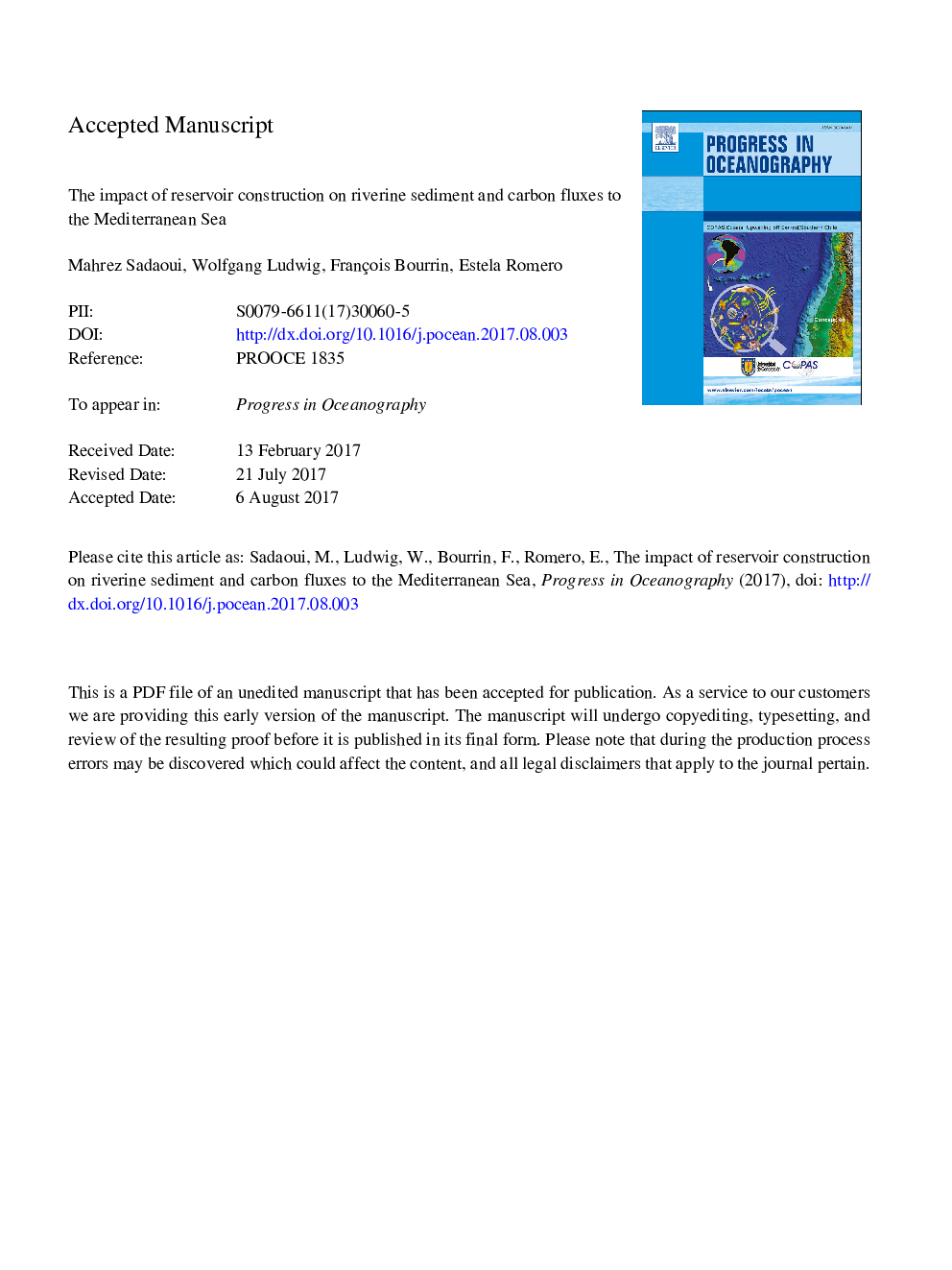| کد مقاله | کد نشریه | سال انتشار | مقاله انگلیسی | نسخه تمام متن |
|---|---|---|---|---|
| 8886660 | 1627895 | 2018 | 45 صفحه PDF | دانلود رایگان |
عنوان انگلیسی مقاله ISI
The impact of reservoir construction on riverine sediment and carbon fluxes to the Mediterranean Sea
ترجمه فارسی عنوان
تأثیر ساخت مخزن بر رسوب رودخانه و جیوه کربن به دریای
دانلود مقاله + سفارش ترجمه
دانلود مقاله ISI انگلیسی
رایگان برای ایرانیان
کلمات کلیدی
رودخانه های مدیترانه، فسفات رسوب معلق، کربن آلاینده کربن، مخازن، مدل سازی،
موضوعات مرتبط
مهندسی و علوم پایه
علوم زمین و سیارات
زمین شناسی
چکیده انگلیسی
Riverine suspended particulate matter (SPM) is an important vector for the transfer of nutrients and contaminants to the Sea. Mediterranean rivers are naturally rich in SPM, but their fluxes have been largely altered in the past decades because of damming. Based on empirical modeling, combining literature estimates on SPM fluxes with the environmental characteristics of the corresponding drainage basins, we present for the first time a spatially explicit quantification of the natural fluxes at the level of the Mediterranean Sea and its different sub-basins. These fluxes are further combined with the evolution of major reservoir constructions during the last century in order to quantify the sediment retention by dams. Our results confirm that natural riverine sediment fluxes generally result from a combination of hydroclimatic, geomorphologic and land use parameters in the corresponding drainage basin. Among these factors, the combination of lithology and land elevation appears to be a key factor in the control of mechanical erosion rates. According to our model, the natural flux of SPM by all Mediterranean rivers cumulates to about 997 Mt yrâ1, which corresponds to a specific SPM flux of 211 t kmâ2 yrâ1. Besides the Nile River, which holds a particular place among the Mediterranean rivers, coastal rivers (<5000 km2) are particularly important for the overall SPM transport. Although they only occupy 38% of the Mediterranean drainage basin area, they export about 58% of the natural SPM flux. We further quantified the potential impact of damming on these fluxes. Using the dams which are geolocalized in the global GRandD data base, and combining them with a high resolution (5â²) river routing scheme developed in this study, we find that after 2003, about 35% of the river sediments are retained by dams (26% without the Nile). These values are clearly minimum values, since GRandD is far from being complete in the Mediterranean drainage basin. According to our simulations, about 22% of the storage capacity is currently lost in these dams, and about 30% of them have a life expectancy that does not exceed 200 years. We finally also combined our modeling with a global model for the fluxes of particulate organic carbon (POC), representative for particulate organic nutrients in general. Although POC is non-linearly coupled to the fluxes of SPM, our results show that the retention of POC in dams is almost identical to the retention of sediments.
ناشر
Database: Elsevier - ScienceDirect (ساینس دایرکت)
Journal: Progress in Oceanography - Volume 163, April 2018, Pages 94-111
Journal: Progress in Oceanography - Volume 163, April 2018, Pages 94-111
نویسندگان
Mahrez Sadaoui, Wolfgang Ludwig, François Bourrin, Estela Romero,
